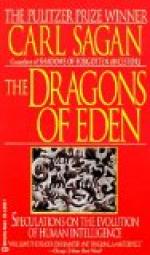|
This section contains 403 words (approx. 2 pages at 300 words per page) |

|
In presenting [the theory of the triune brain in The Dragons of Eden], Sagan encourages the reader to examine human intelligence and behavior in terms of the elements they have in common with other living animals. While this is, in itself, appropriate, the association of our behavior with that of other living animals distorts the modern concept of evolution. Humans did not evolve from contemporary snakes (nor even from extinct dinosaurs). Rather, all currently living beasts had, in the unfathomable past, common ancestors who gave rise to many different evolutionary lines. Reptiles—extinct or alive—are not our evolutionary precursors. If anything, they are evolutionary siblings that have grown in a different environment. (pp. 319-20)
These points are not made clearly, if at all, by Sagan. His presentation is reminiscent of a simplistic and largely discounted 19th-century theory that stated, "ontogeny recapitulates phylogeny": in other words, in the...
|
This section contains 403 words (approx. 2 pages at 300 words per page) |

|


